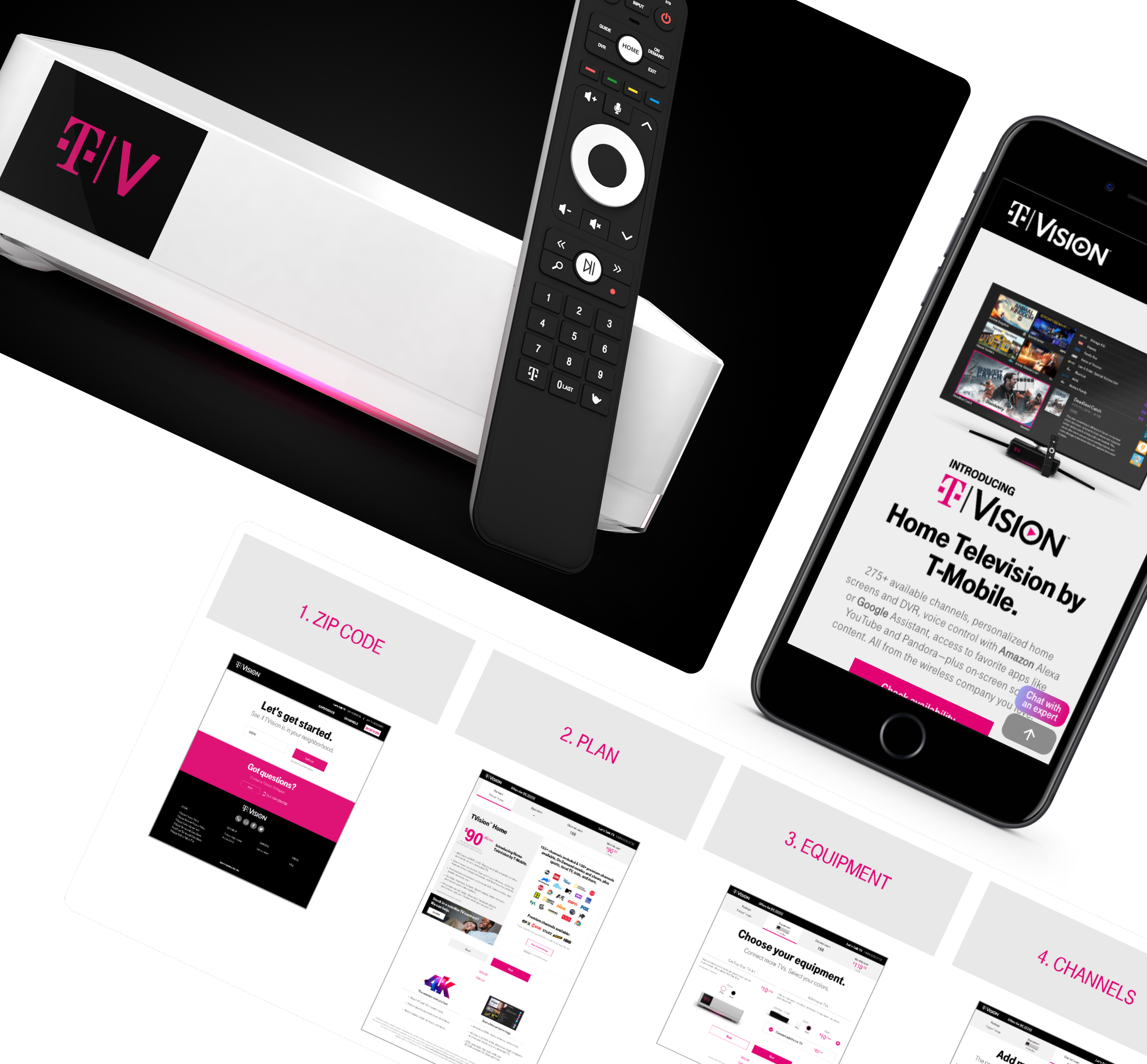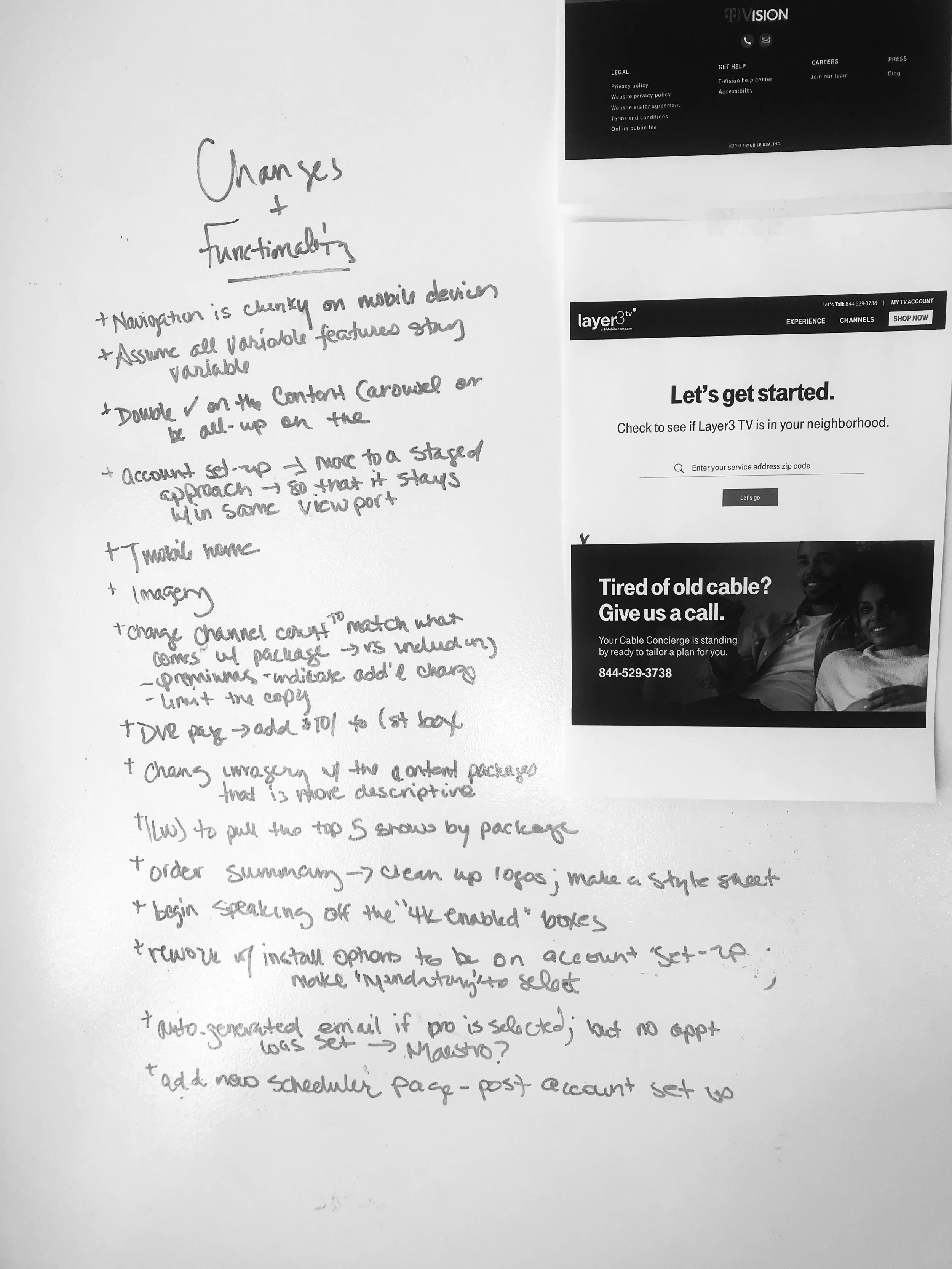Optimizing the buy flow for a market launch for an entertainment streaming service
Overview
Leveraging video technology from a recent startup acquisition, T-Mobile introduced TVision, a streaming television service designed to offer a flexible alternative to traditional cable.
Leading up to the official product launch, engineering and design had to quickly and smoothly integrate both the customer-facing purchase experience as well as support in-store sales capabilities for retail representatives.
My responsibilities
User research
Journey mapping
UX and UI design

Opportunity
Our small integrated product and developer teams were instrumental in executing a rapid Lean UX process. This agility allowed us to conduct swift usability tests, rapidly prototype solutions, and iterate designs based on immediate user feedback, significantly accelerating our development cycles.
Action
I initiated collaborative workshops with developers to gather diverse perspectives and translate them into actionable journey maps and process flows. This data-driven approach not only provided clear documentation for complex workflows but also significantly reduced development time by minimizing ambiguity and ensuring everyone was working from the same understanding.
MAPPING THE PURCHASE JOURNEY
When I joined the team, there was a lack of source-of-truth documentation which was leading to an inconsistent and buggy experience for customers and made it challenging to identify the root of the problems. To address this, I took the initiative to create a detailed, layered service blueprint that captured the entire customer experience from start to finish. This visual roadmap not only outlined the process but also incorporated valuable insights and requirements and served as a central source of truth for stakeholders to reference.
UX & UI OPPORTUNITIES
Integrating rapid iteration through sprint-based usability testing
To ensure continuous improvement and user-centric development within a tight 3-month timeframe, I was able to successfully embed usability testing directly into each sprint. This strategy allowed for real-time feedback, ensuring that development and design decisions were cohesive and consistent.
USABILITY TEST INSIGHTS EXAMPLE
EXPERIENCE DESIGN SOLUTION
Hands on collaboration between design and development introduced
Previously, the product team followed a waterfall approach with design, expecting pixel-perfect mockups before development began. This method often led to longer timelines, increased rework, and more bug fixes from both technical and user experience standpoints. To address these issues, I collaborated with technical leads and the scrum master to introduce and gain support for development workshops. By involving developers earlier in the design phase, we could identify potential technical constraints sooner, reduce rework, and create a more seamless handoff process.
WHITEBOARDING SESSION EXAMPLES
WHITEBOARD TO USERFLOW
I applied Lean UX principles to drive rapid experimentation and testing, fostering a collaborative development process and data-driven design iterations. Following the phase 1 launch, I presented long-term design recommendations to leadership, securing approval and resources for further concept development.
EQUIPMENT SELECTION
Created an intuitive, conversational interface that gathered essential customer information, enabling more accurate equipment recommendations.
REVIEW CART RE-DESIGN
Redesigned the review cart page to improve visual hierarchy and usability, addressing redundant package information and a complex editing UI. The new design presents package details in a streamlined, responsive format, with the goal of reducing cognitive load.
ALWAYS ACCESSIBLE SHOPPING CART
Designed a persistent, bottom-anchored cart ensuring constant accessibility and streamlining the checkout process. A toggle interaction allows users to expand the cart for detailed information while maintaining a compact, screen-friendly footprint.
Outcomes & impact
By spearheading a new collaborative approach between development and design teams, we were able to strengthen ways of working between the two groups. I introduced cross-functional sprint planning sessions that integrated designers from the outset, breaking down traditional silos. This early involvement allowed designers to provide crucial input on user experience and technical feasibility before development began.
25%
Decrease in customer-reported experience/technical issues (including cart abandonment rates).
38%
Increase in overall team efficiency, as measured by story point completion rates.
30%
Reduction in post-development design revisions and related bug-fixes.

